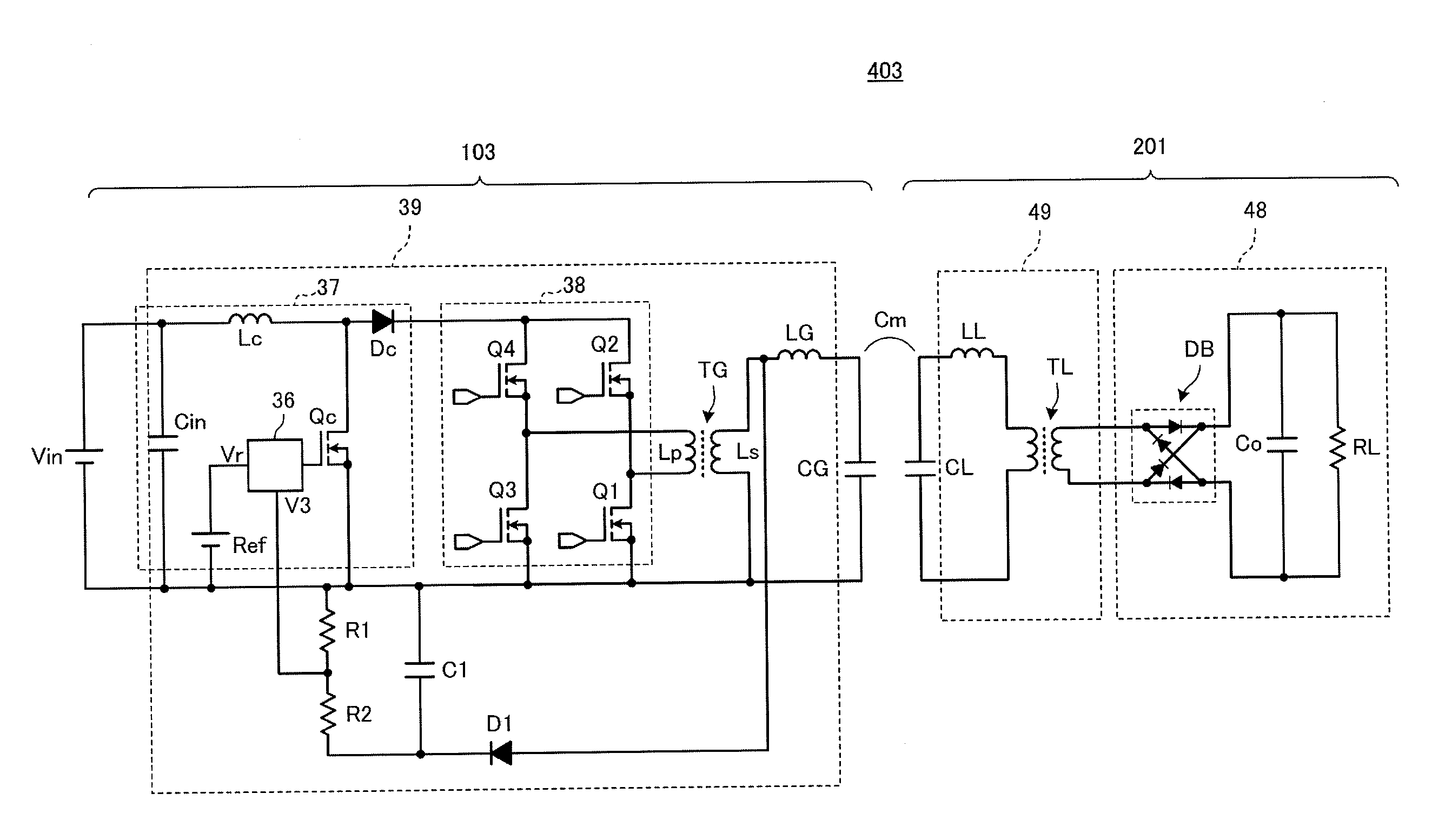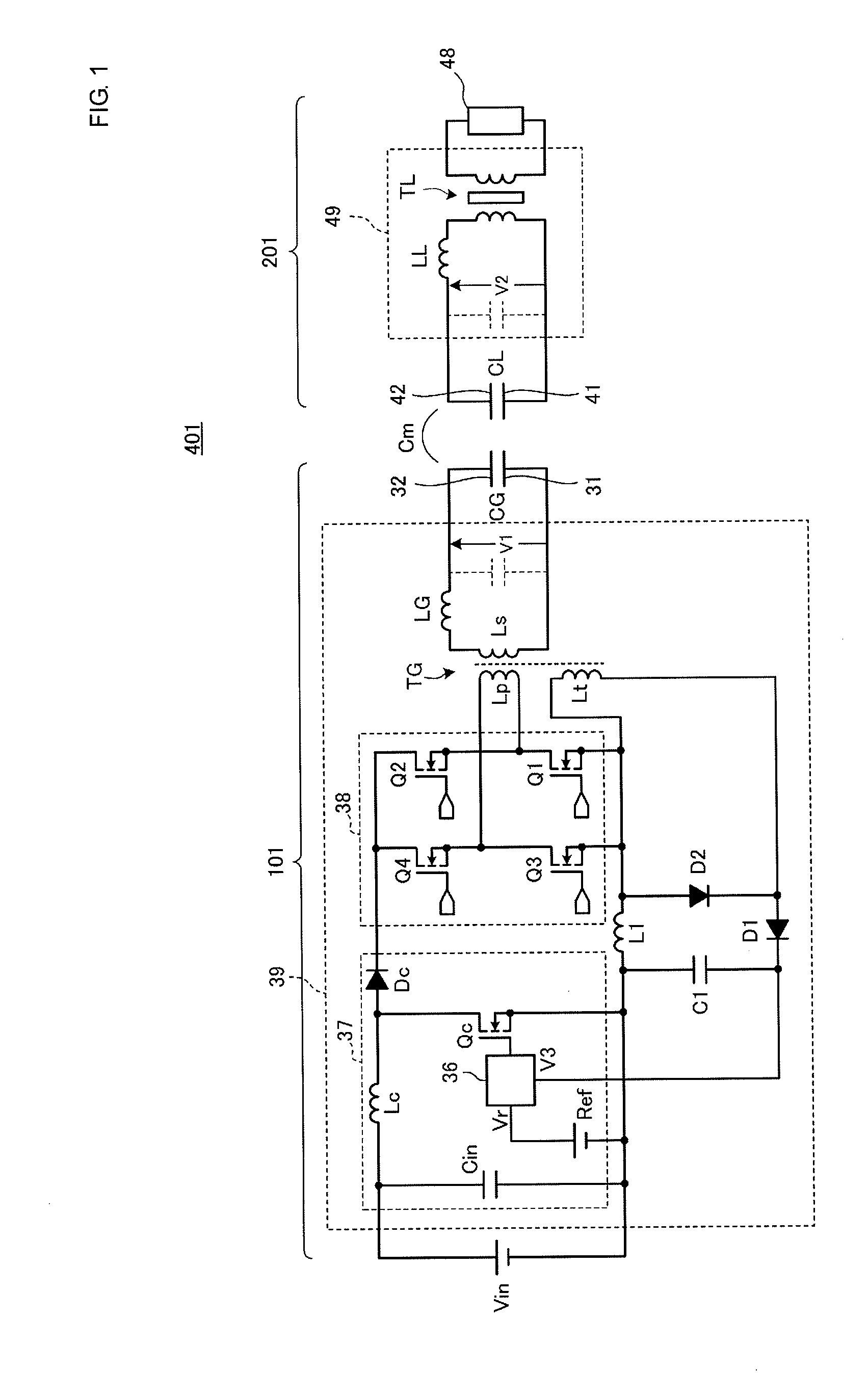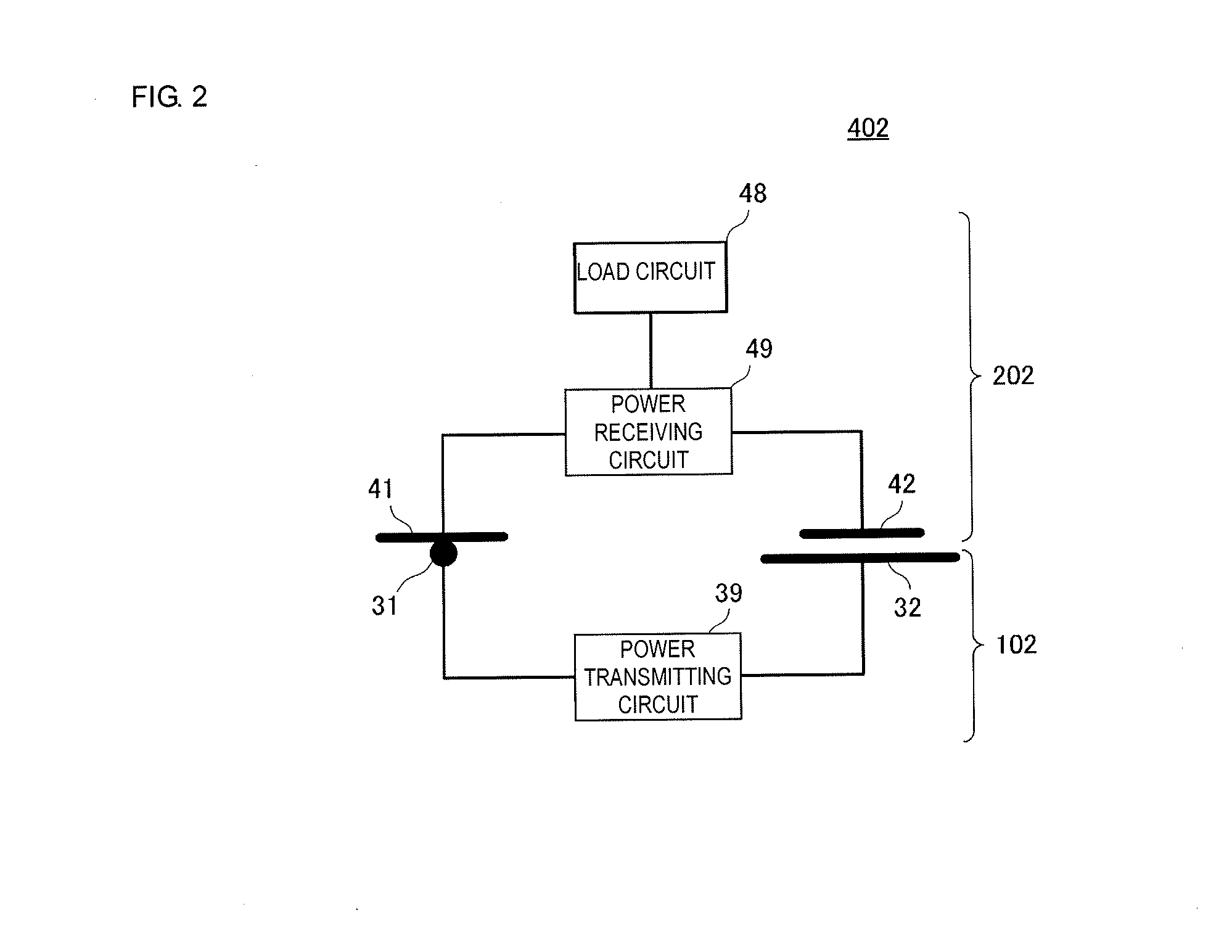Power transmission system and power transmitting apparatus
a transmission system and power technology, applied in the direction of transmission, circuit arrangement, inductance, etc., can solve the problems of increasing the scale of the circuit, the difficulty of reducing the size of the windings, and the complexity of the circuit of the whole power receiving apparatus, so as to reduce the turn ratio of the step-up transformer, reduce the parasitic capacitance, and reduce the size of the transformer
- Summary
- Abstract
- Description
- Claims
- Application Information
AI Technical Summary
Benefits of technology
Problems solved by technology
Method used
Image
Examples
first embodiment
[0041]FIG. 1 is an equivalent circuit diagram of a power transmission system 401. In FIG. 1, a power transmitting apparatus 101 includes a power transmitting circuit 39, a passive electrode 31, and an active electrode 32. The passive electrode 31 and the active electrode 32 are power-transmitting-apparatus-side coupling electrodes. The power transmitting circuit 39 is formed of a step-up transformer TG, an inductor LG, a DC-AC conversion circuit 38, and a voltage conversion circuit 37. The DC-AC conversion circuit 38 generates, for example, a high-frequency voltage of a hundred kHz to several tens of MHz. A voltage step-up circuit formed of the step-up transformer TG and the inductor LG steps up a voltage generated by the DC-AC conversion circuit 38 and applies the stepped-up voltage between the passive electrode 31 and the active electrode 32. A capacitor CG represents a capacitance generated by the passive electrode 31 and the active electrode 32. The voltage step-up circuit and t...
second embodiment
[0056]FIG. 2 is a simplified circuit diagram of a power transmission system 402 according to a second embodiment. The power transmission system 402 includes a power transmitting apparatus 102 and a power receiving apparatus 202. The power transmitting apparatus 102 includes a power-transmitting-apparatus-side passive electrode 31 and a power-transmitting-apparatus-side active electrode 32, and the power receiving apparatus 202 includes a power-receiving-apparatus-side passive electrode 41 and a power-receiving-apparatus-side active electrode 42.
[0057]A power transmitting circuit 39 is connected between the power-transmitting-apparatus-side active electrode 32 and the power-transmitting-apparatus-side passive electrode 31. A power receiving circuit 49 is connected between the power-receiving-apparatus-side active electrode 42 and the power-receiving-apparatus-side passive electrode 41, and a load circuit 48 is connected to the power receiving circuit 49.
[0058]The power transmitting c...
third embodiment
[0064]FIG. 4 is a circuit diagram of a power transmission system 403 according to a third embodiment. The power transmission system 403 includes a power transmitting apparatus 103 and a power receiving apparatus 201. A capacitor CG represents a capacitance generated by a passive electrode and an active electrode forming power-transmitting-apparatus-side coupling electrodes. A capacitor CL represents a capacitance generated by a passive electrode and an active electrode forming power-receiving-apparatus-side coupling electrodes.
[0065]The configuration of the power receiving apparatus 201 is the same as that of the power receiving apparatus described in the first embodiment. Here, a load circuit 48 of the power receiving apparatus 201 is formed of a diode bridge DB, a smoothing capacitor Co, and a load RL.
[0066]The configuration of the power transmitting apparatus 103 is about the same as that of the power transmitting apparatus 101 described in the first embodiment. A point at which ...
PUM
 Login to View More
Login to View More Abstract
Description
Claims
Application Information
 Login to View More
Login to View More - R&D
- Intellectual Property
- Life Sciences
- Materials
- Tech Scout
- Unparalleled Data Quality
- Higher Quality Content
- 60% Fewer Hallucinations
Browse by: Latest US Patents, China's latest patents, Technical Efficacy Thesaurus, Application Domain, Technology Topic, Popular Technical Reports.
© 2025 PatSnap. All rights reserved.Legal|Privacy policy|Modern Slavery Act Transparency Statement|Sitemap|About US| Contact US: help@patsnap.com



